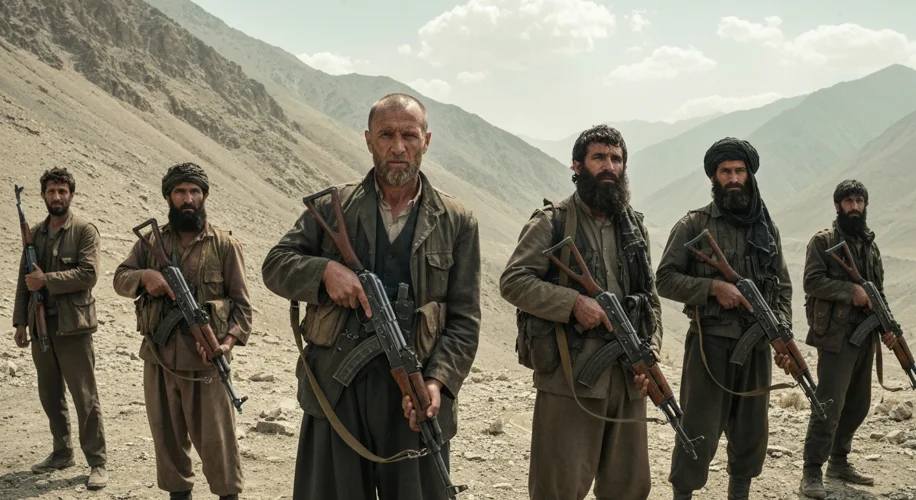In the late 20th century, a storm was brewing, a tempest born of ideology, conflict, and a fervent desire for a world reshaped. From the crucible of Soviet-occupied Afghanistan, a new force emerged, one that would cast a long and ominous shadow across the globe: Al-Qaeda. This is the story of its genesis, its nascent ambitions, and the early operations that laid the groundwork for its future notoriety.
From Mujahideen to a Global Network
The seeds of Al-Qaeda were sown in the brutal conflict that engulfed Afghanistan from 1979 to 1989. As the Soviet Union’s tanks rolled into Kabul, a disparate collection of Afghan mujahideen fighters, supported by a global coalition of Muslim volunteers, rose to meet the challenge. Among these foreign fighters was a charismatic Saudi millionaire named Osama bin Laden. Bin Laden, deeply influenced by radical Islamist ideologies, saw the Afghan war not just as a local struggle but as a divine mandate to defend Muslim lands from foreign aggression.

During the war, bin Laden and his associates began to forge connections and develop a distinct ideological vision. The traditional, nationalist motivations of many mujahideen were, for bin Laden and his inner circle, subsumed by a pan-Islamic, anti-Western, and anti-secularist agenda. They believed that the world’s Muslim communities were under siege by infidel powers, particularly the United States, and that a global jihad was necessary to restore Islamic purity and dominance.
Ideological Underpinnings: A World Divided
Al-Qaeda’s ideology was a potent cocktail of radical interpretations of Islamic scripture, anti-colonial sentiments, and a deep-seated resentment towards perceived Western interference in Muslim affairs. Key to their worldview was the concept of takfir – the excommunication of fellow Muslims deemed to have strayed from true Islam, including existing Arab regimes that maintained ties with the West. This allowed them to delegitimise and target governments they deemed apostate, further consolidating their own authority within radical circles.
Osama bin Laden, alongside ideologues like Abdullah Azzam (early on) and later Ayman al-Zawahiri, articulated a vision of a global caliphate, a unified Islamic state free from foreign influence and governed by a strict interpretation of Sharia law. Their early writings and pronouncements focused on the presence of American troops in Saudi Arabia, the birthplace of Islam, as a grave insult and a primary justification for offensive action.
Early Operations: Laying the Foundation
Following the Soviet withdrawal from Afghanistan in 1989, bin Laden did not disband his network. Instead, he redirected its focus. Al-Qaeda, which loosely translates to “The Base” or “The Foundation,” began to evolve from a fighting force into a clandestine organisation dedicated to orchestrating attacks against its perceived enemies.
One of the group’s earliest significant operations, though not directly claimed by Al-Qaeda at the time, was the 1993 World Trade Center bombing in New York City. While Ramzi Yousef, a Pakistani Islamist, was the mastermind, the attack was financed and supported by elements with ties to Al-Qaeda’s nascent network. The bombing, which killed six people and injured over a thousand, was intended to topple the Twin Towers, a potent symbol of American economic power. Though it failed in its ultimate goal, it demonstrated the group’s willingness and capability to strike at the heart of the United States.

Another critical event that galvanised Al-Qaeda was the US military intervention in Somalia in 1992-1993, particularly the Battle of Mogadishu in October 1993. The sight of American soldiers’ bodies being dragged through the streets, broadcast globally, was interpreted by bin Laden and his followers as proof of American weakness and a sign that the US could be driven from Muslim lands through persistent asymmetric warfare. This event significantly bolstered Al-Qaeda’s narrative and attracted new recruits.
In 1996, bin Laden issued his first fatwa, formally declaring war on the United States. This was followed by another fatwa in 1998, co-signed by Zawahiri, which called for the killing of Americans, including civilians, anywhere in the world. These declarations explicitly targeted US interests, including embassies, and laid the ideological groundwork for the devastating attacks that were to come.
The Gathering Storm: From Mogadishu to the Millennium
By the turn of the millennium, Al-Qaeda had established a sophisticated global network of cells and financiers. The group’s early strategic goals were multifaceted: to expel Western influence from Muslim lands, to destabilise regimes perceived as un-Islamic, and to strike directly at the “far enemy” – the United States – to provoke an overreaction that would rally Muslim populations against their governments and the West. The bombing of US embassies in Nairobi, Kenya, and Dar es Salaam, Tanzania, in August 1998, killing over 200 people, was a chilling manifestation of this strategy. The simultaneous attacks, coordinated by Al-Qaeda, were aimed at US personnel and facilities, and they brought the group firmly onto the global stage.
These early operations, though horrific in their human cost, were also strategic moves. They were designed to test the resolve of their adversaries, to gain experience in operational planning, and to sow fear and instability. Al-Qaeda was not just a collection of militants; it was an organisation learning, adapting, and refining its methods, driven by a radical ideology that promised a return to a perceived golden age of Islam. The foundation was laid, and the world was about to learn the true terror of “The Base.”
Conclusion
The rise of Al-Qaeda was not an overnight phenomenon. It was a gradual process, shaped by the geopolitical landscape of the late 20th century, fuelled by potent ideological grievances, and executed through a series of increasingly audacious operations. From the battlefields of Afghanistan to the streets of American cities and African capitals, the early years of Al-Qaeda represent a critical, and terrifying, chapter in modern history, a prelude to the seismic events that would dramatically reshape the 21st century.

